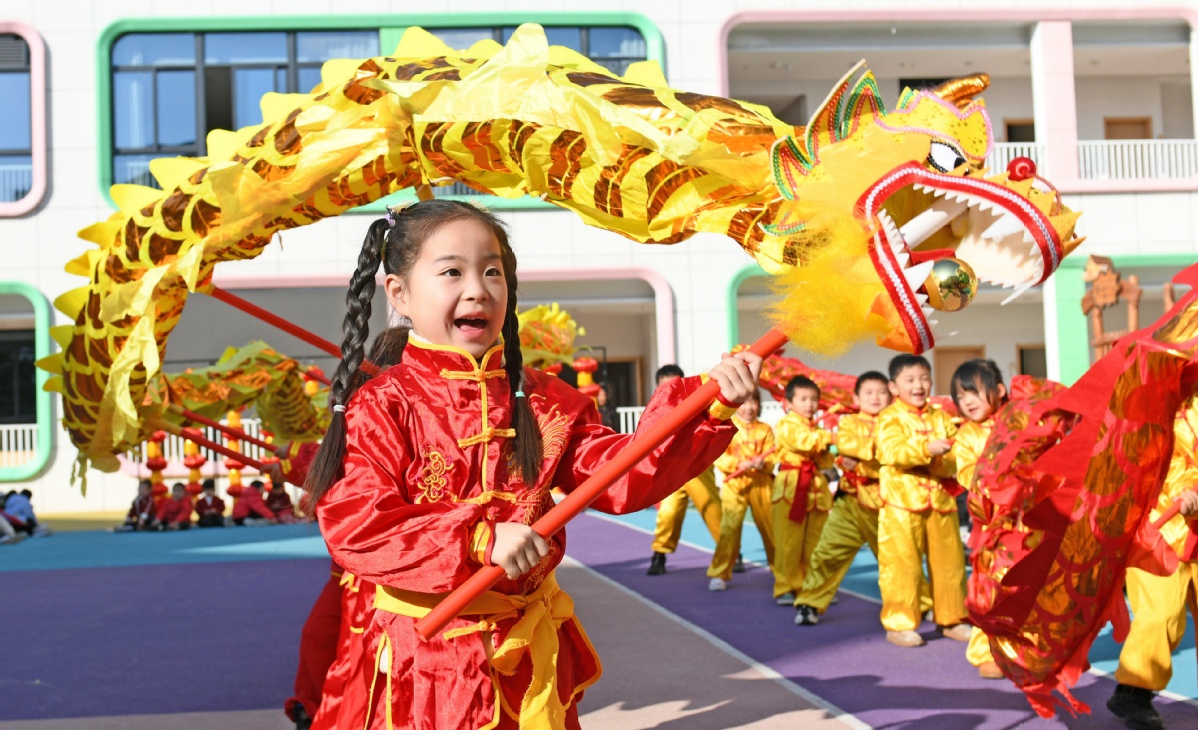Chinese New Year galas shine light on culture, values

In October 2003 the United Nations Educational, Scientific, and Cultural Organization adopted a new convention — the Convention for the Safeguarding of the Intangible Cultural Heritage. Since 2008, a special committee has been updating the heritage list of festivals, customs, and cultural practices and expressions.
Not all countries agree with the idea of inscribing or including traditions, festivals, and cultural expressions and events on a heritage list, because it practically means excluding hundreds of them. Nevertheless, the UNESCO Intangible Cultural Heritage of Humanity List promotes global understanding by highlighting cultural diversity.
READ MORE: Spring Festival boosts travel, consumption as 8-day holiday nears end
On Dec 4, 2024, Spring Festival was included in the UNESCO Representative List of the Intangible Cultural Heritage of Humanity. Previously, Dragon Boat Festival was included in the list in 2009, and Peking Opera and Chinese shadow puppetry were included in 2010 and 2011, respectively.
Spring Festival is celebrated not only in China but also in some other Asian countries. In recent years it has increasingly become a global expression of China’s opening-up to the world. It has expanded beyond its traditional role to become a widely recognized cultural celebration around the world.
In recent decades, Chinese cultural organizations have been continuously working to internationalize Spring Festival (also called Chinese New Year) and use it as a tool to enhance China’s global image and cultural influence. To share with people the feelings and traditions of Spring Festival is part of the “soft power”, which is the ability of a country or civilization to influence others through cultural, diplomatic, and other non-coercive means.
The growing economic ties and people-to-people exchanges between China and countries across the world have contributed to the global popularity of Spring Festival. Multinational companies, particularly those that have a large share in the Chinese market, have started to use Chinese New Year in their marketing strategies to boost their business.
Many events are sponsored by Chinese embassies, consulates and media organizations. These events serve as platforms to showcase Chinese culture, arts, and cuisine. By sponsoring such events, the diplomatic wing of the Chinese government has been able to create a positive perception about Chinese culture and strengthen people-to-people connections.
Spring Festival is a time of family get-togethers and sumptuous food. Chinese people from across the country, as well as from abroad, travel back home to have Lunar New Year eve dinner with family, and to meet relatives and friends.
In this sense, Spring Festival is an expression of the collective memory of the unique bond that is the family. Such special moments are common to all humankind. As Roman poet Terentius said: “I’m a human being, and whatever belongs to the human race is not alien to me.”
But if all festivals were the same, the world would be a little boring.
There are aspects that are unique to Chinese New Year. These aspects often make non-Chinese people interested in knowing more about the festival. For example, the red envelope (with money) that is given to children and younger relatives is a traditional practice that surprises many foreigners, because they cannot fathom who gives the red envelopes to whom and why.
Many foreigners find the lion or dragon dance fascinating but do not know the cultural symbolism of prosperity and strength behind it. Some even wonder why the Chinese people (mostly women) wear red dresses or write “Spring Festival couplets” (chunlian), or poetic verses and glue them on doors to wish people prosperity, happiness and good fortune in the new year.
ALSO READ: UNESCO tag makes Spring Festival all the more special
When a foreigner begins to learn Chinese characters, one of the first things she or he notices is that among “Spring Festival couplets” decorations glued to the doors, some with the character fu (good fortune, bliss) usually put in the middle are often placed upside down — those who do not know Chinese or are learning the language do not see it. On asking, a Chinese friend or teacher might tell you that the Chinese character dao, meaning “upside down”, sounds like the word dao that means “to arrive” or “to come”, which is used to mean the arrival of good fortune and good luck in the home.
And, of course, Spring Festival means food — dumplings and spring rolls (symbolizing wealth), rice cakes (representing growth), fish (for abundance), tangerines (good luck), and much more.
Spring Festival has become a very important window for Chinese culture to “go global”. It tells the world not to be afraid of China’s rise, because a country that celebrates the primacy of family and unity with the universe cannot be a threat to another country. Instead, it hopes to build a harmonious future for humankind.
The author is a professor at the International Institute of Chinese Studies at Beijing Foreign Studies University.
The views do not necessarily reflect those of China Daily.


